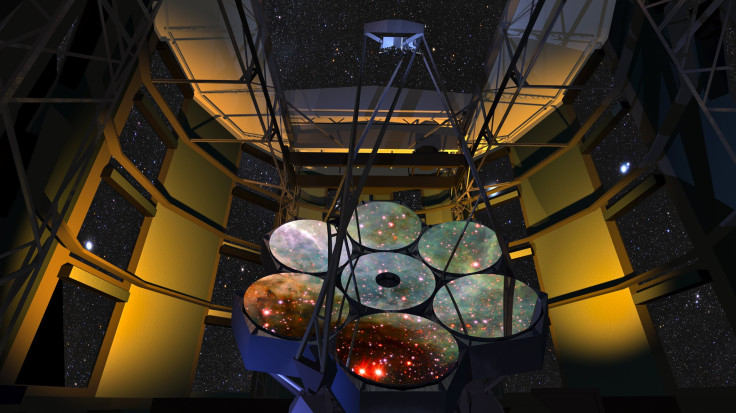Giant Magellan Telescope To Observe Black Holes, Dark Matter And Life On Other Planets With 20 Ton Mirrors
The Giant Magellan Telescope is taking another step toward completion as its third mirror, weighing 20 tons, gets cast on Aug. 24. The massive telescope will feature seven such mirrors and will be used by astronomers to observe exoplanets orbiting stars, black holes, dark energy and dark matter.

For the Giant Magellan Telescope, to be located in Chile, it's all about solving some of the most pressing mysteries of the universe. The telescope is being developed as part of an international collaboration of universities and organizations, including the Carnegie Institution for Science, the Smithsonian Institute, the Australian National University, Harvard University, the University of Arizona and the Korea Astronomy and Space Science Institute. Their goal is to have it be operational within 10 years.
According to the GMTO Corporation, the telescope will have 10 times the resolving power of the Hubble Space Telescope. According to GMTO, the resolving power could help answer the question of whether there is life on other planets. Exoplanets orbiting host stars tend to be difficult to observe due to the glare from the parent star, but the Giant Magellan Telescope will be able to cut through the glare and observe the planet. New pictures of exoplanets could provide new evidence of life on other planets.
The resolving power of the Giant Magellan Telescope will allow it to observe planets or objects that are close together and 10 times sharper than the ones produced by Hubble. The third mirror will be cast on Aug. 24 at the University of Arizona’s Steward Observatory Mirror Lab. According to GMTO, each mirror weighs close to 20 tons and its surface has to be smoothed down to a twentieth of a wavelength of light, roughly one-millionth of an inch. The process is being described as “the greatest astronomical optics challenge ever undertaken.”
The seven mirrors, each measuring 8.4 meters, 27.6 feet, in diameter, will be pieced together to form one large surface that will measure approximately 24.5 meters, 80 feet, in diameter. Peter Strittmatter, head of the Department of Astronomy at Steward Observatory, said in a statement, “Astronomical discovery has always been paced by the power of available telescopes and imaging technology. The GMT allows another major step forward in both sensitivity and image sharpness.”
Astronomers will use the Giant Magellan Telescope to gain better insight into the physics of black holes, dark energy and dark matter while also observing planets orbiting parent stars. Most exciting for researchers, notes GMTO, is the possibility of making new discoveries that one cannot fathom at the present moment. The Giant Magellan Telescope will be operational by 2020 and will cost $700 million to complete.
A video describing the process of constructing the Giant Magellan Telescope and how it will be used for research can be viewed below.
© Copyright IBTimes 2024. All rights reserved.






















